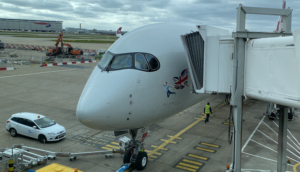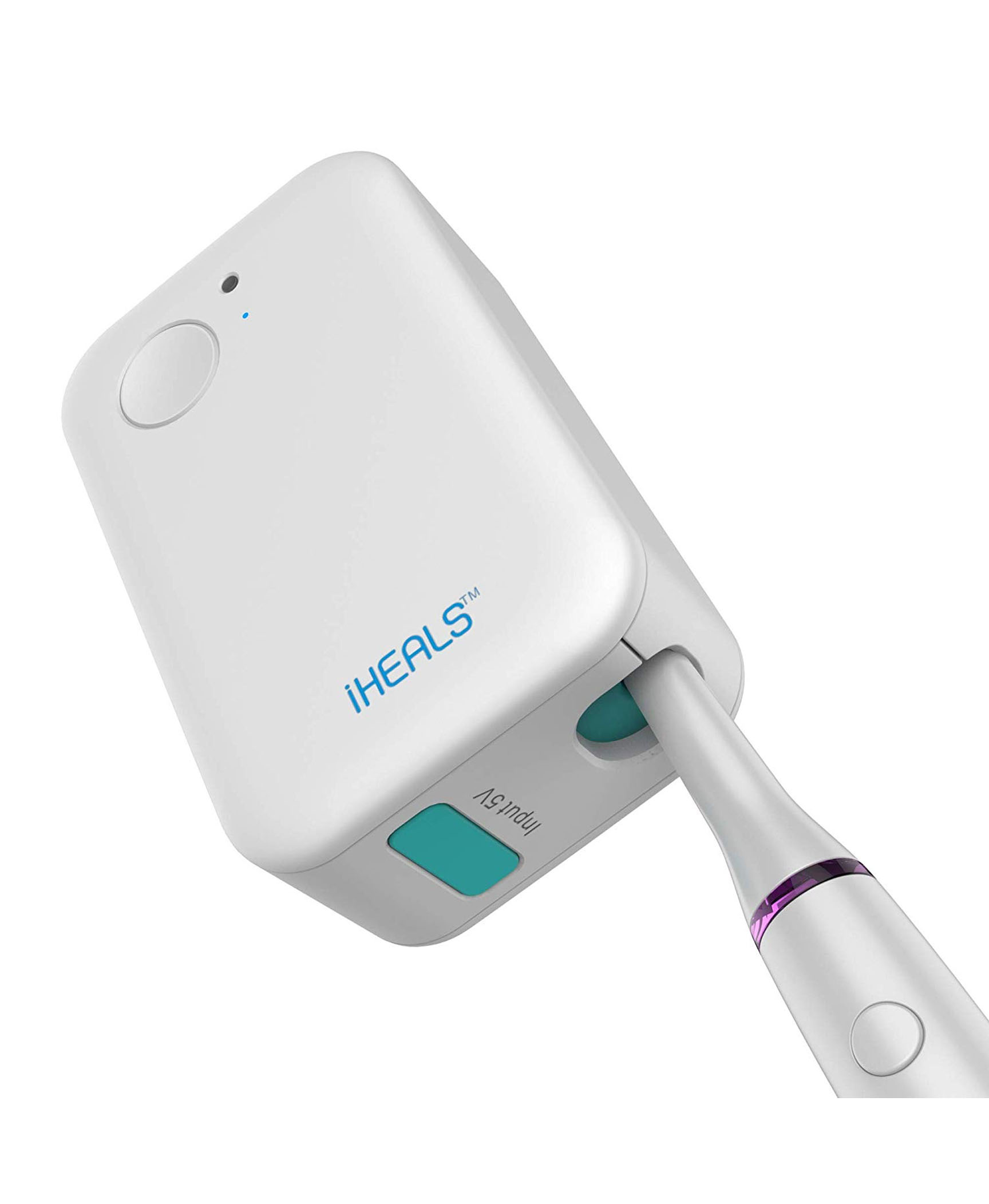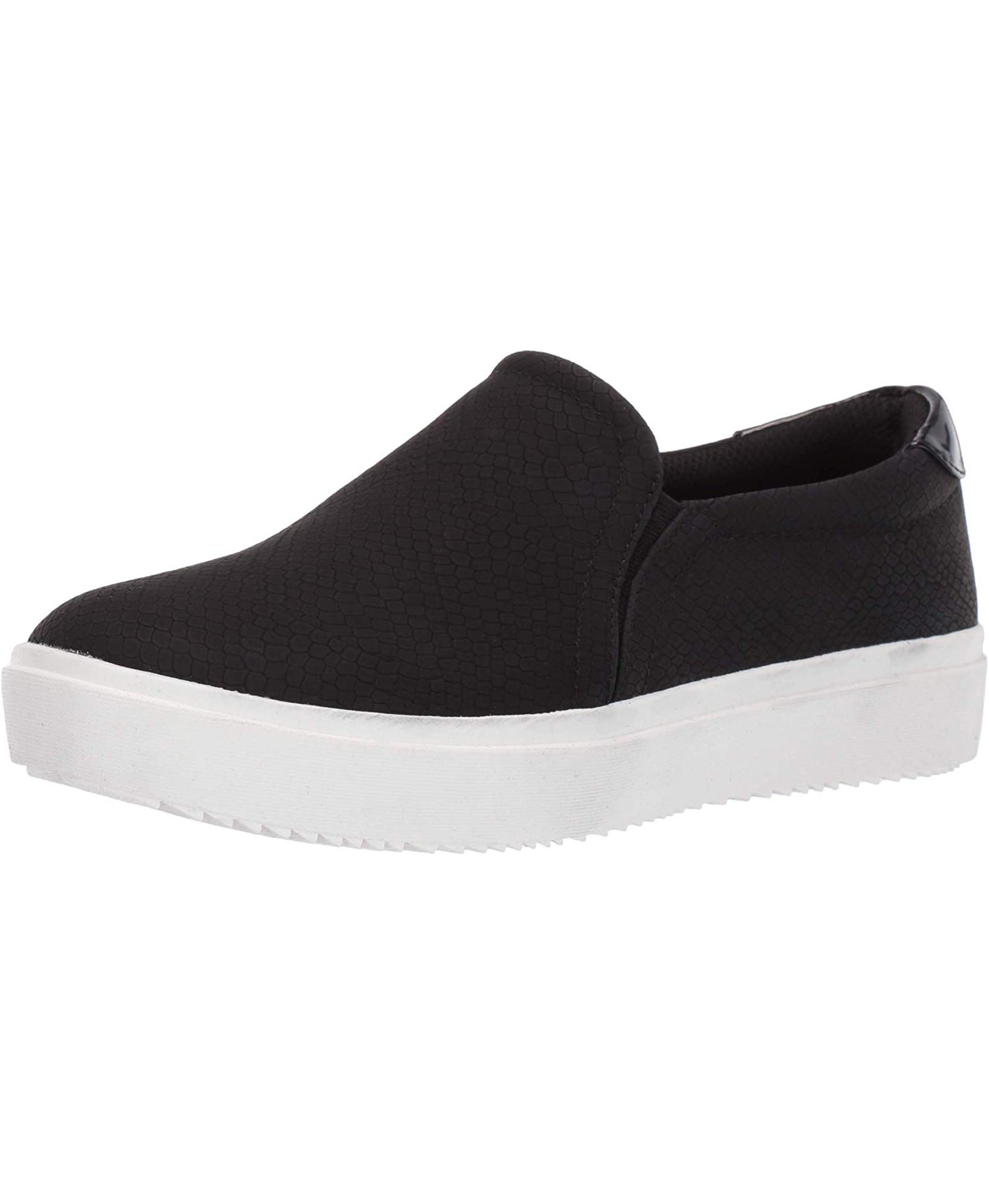In the back garden of a London flat, I was already social distancing when a text popped up from a friend saying that the UK and Ireland were being added to this list of European countries with travel restrictions. As news broke of more bans and with airlines canceling an unprecedented number of flights, I knew that waiting around a week until my originally scheduled departure was likely a no-go. Getting stranded abroad indefinitely could soon become a possibility.
Unable to get a flight before the Monday deadline, I secured a seat leaving the day after the ban went into effect. Here’s how my experience played out along with a few tips for other U.S. citizens returning from Europe or other banned regions.
Checking-In and Boarding
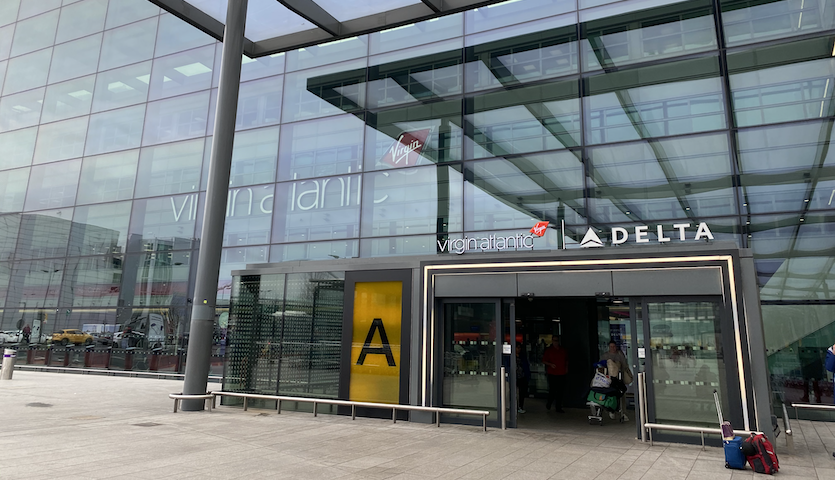
Arriving at the ghost town formerly known as Heathrow-Terminal 3, it was visible that Europe’s busiest airport had been blindsided by the response to the coronavirus. As I walked into the Delta/Virgin Atlantic check-in section, a host had asked if I had already done so online. Responding yes, I was pointed towards bag drop. With six stations open and no one in line, I went to the first counter and handed over my passport, and lifted my bag on the scale. I was given my boarding passes and baggage slip, and the whole ordeal took less than 5 minutes.
It was a similar situation at security, with nearly nobody in several lines. I passed through the screening in 5 minutes.
The airside of the terminal was quiet, but all stores and restaurants remained open, I did notice more passengers spread out on chairs sleeping than any other time I've flown through LHR, and later realized why after seeing the string of canceled flights on the departures screen.
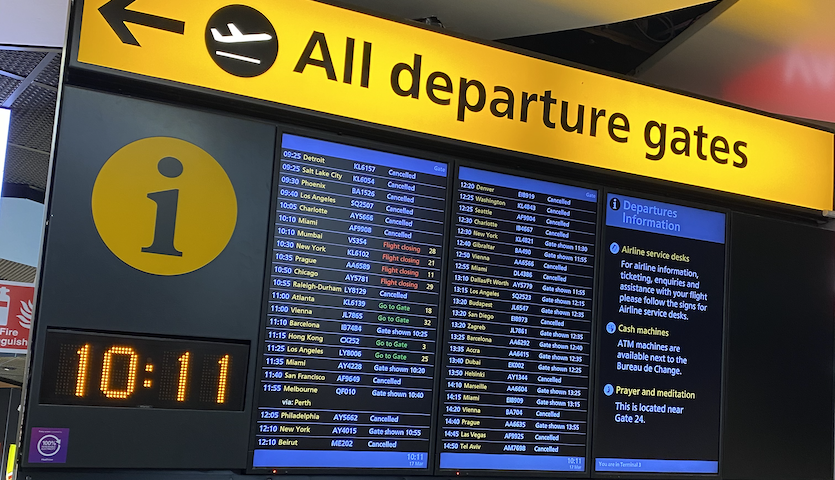
Once the gate was announced, I made my way to join a snaking line of passengers to board. Several were wearing face masks and gloves. I tried to properly distance myself from those around me.
At the front of the line, my boarding pass was scanned with no additional questions asked, and I was waved through to board. Walking toward the jetway, an airport employee handed me these two pieces of paper seen below to fill out prior to my arrival in America.
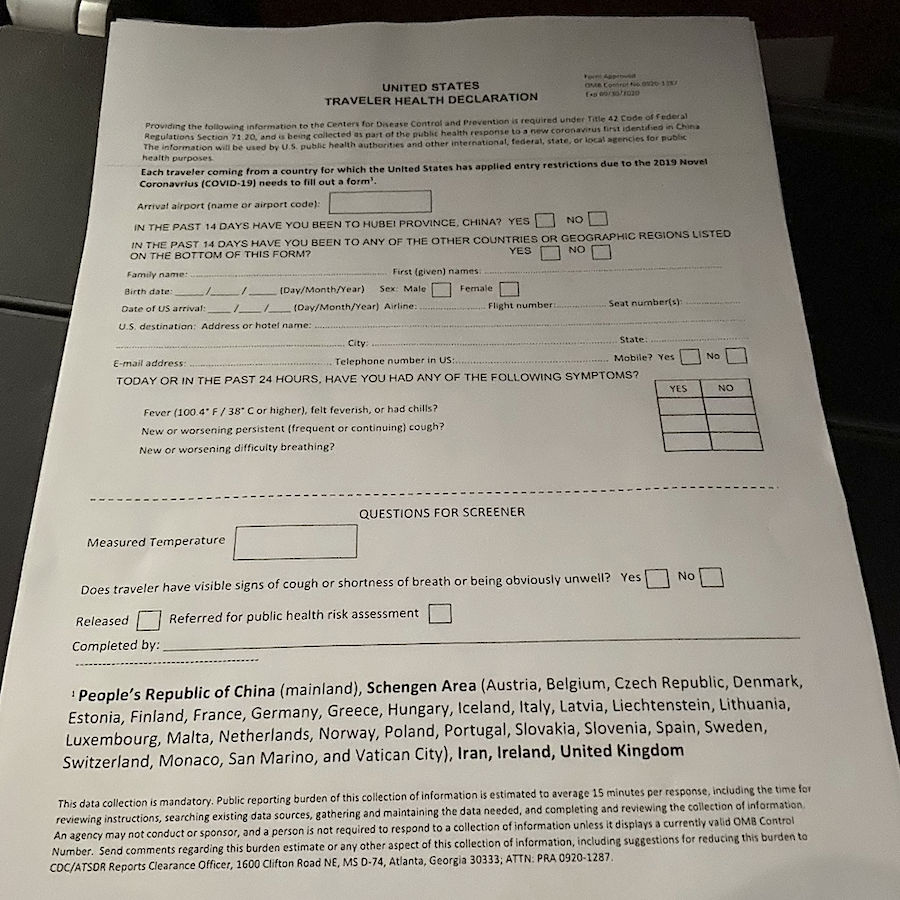
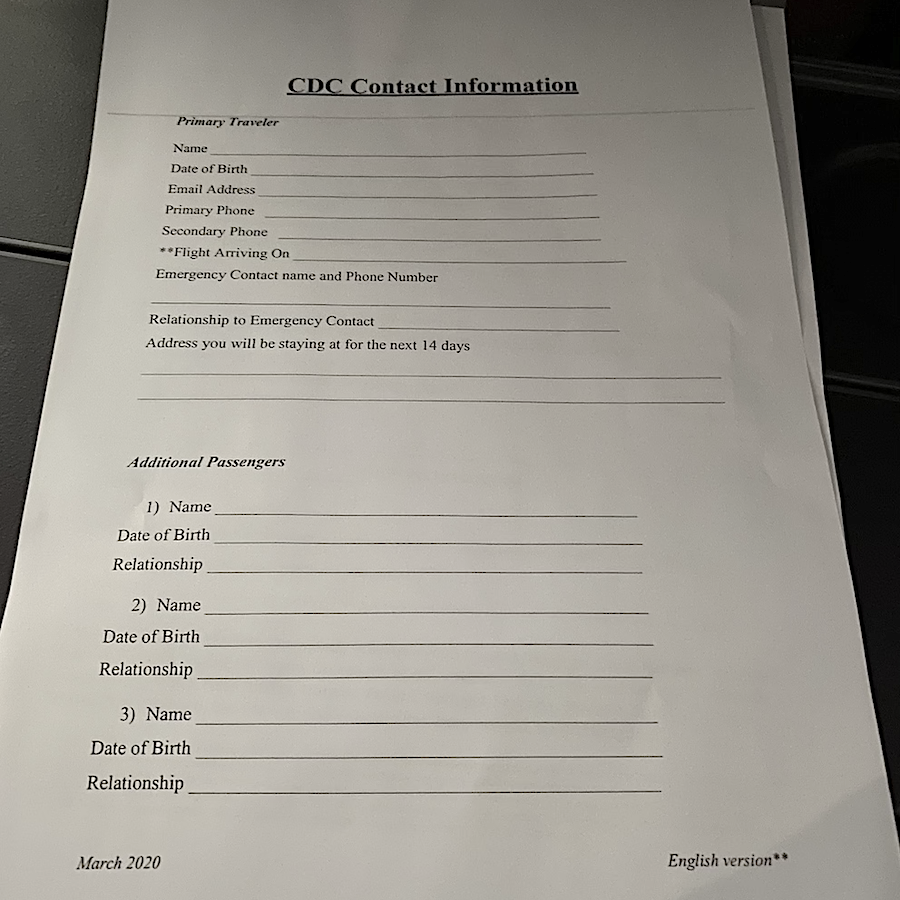
Related: What Airlines Are Doing to Address Concerns About COVID-19 (Coronavirus)
Flight to the United States
In all honesty, I’m hard-pressed to find anything that made this flight any different from regular day-to-day operations. I took my aisle seat in 49H, and once boarding was complete, there was an empty middle seat between me and my row partner who was already napping against the window. I poked my head up like Punxsutawney Phil to look around the cabin and noticed a similar pattern. Most rows had empty seat spacing between flyers, leaving me to deduce that the flight was about 2/3 full. The assumption was spot on as the captain announced we had 221 passengers onboard the carrier's newest plane, the A350-1000 that seats 335 customers when full.
The chief purser was next on the intercom, ensuring passengers that the plane had been extensively cleaned before we boarded and that aircraft was fitted with the most state-of-the-art HEPA air filtration system, which should be the case for an aircraft that is about 6-months old. She then asked if any passengers onboard that did not have a U.S. passport, green card, or valid entry documentation to raise their hand to be known. No one did.
After takeoff, it was business as usual. Drinks, meal service, and duty-free cart careened down the aisle as scheduled. The only noticeable thing I picked up on is that plastic cups for drinks were on a request basis, to avoid limiting another point of contact.
The following 7 hours were spent watching movies and occasional naps which, leading to a very uneventful flight, a recourse I was happy with after all the 24/7 pandemic news.
Related: COVID-19 Flight Cancellations by Region and Airline
Deplaning and Screening
The biggest change in procedure came when we arrived at the gate to disembark. Like most flights, once the seat belt sign chimed off, everyone sprang into action to grab their overhead bags, filling the aisles up to exit. Seated in an aisle seat in the first section of the main cabin, my wait time to exit shouldn't have taken very long, but I noticed the line to exit the aircraft moving at a slower pace than usual. It wasn't until I made it to the galley to turn left and exit that I saw the CDC agents waiting to screen passengers just as they stepped into the jetway. Three masked officers stood at the entry, one reading temperatures with a forehead thermometer, another to take, and fill out the “screener section” of the issued Traveler Health Declaration. The third, I presume, was observing passenger’s physical wellness (coughing, sweats, trouble breathing).
My turn arrived, and I handed my pre-filled form over to the officer at the podium and was then questioned. "Have you been experiencing a fever, persistent cough, or shortness of breath in the last 24-hours?" I responded no. "Did you visit any countries other than the UK in the last 14-days?” Another no from me. He read aloud my 97.6 °F temperature to the officer filling forms who jotted it down and handed me the CDC issued COVID-19 flyer seen below. A roughly 10-second formality and I was on my way up the jetway to the terminal and onward to Customs and Border Control.

Customs and Border Control
I frequently travel internationally, and my credit card covers the cost of Global Entry, so I have been a member of the program for over six years. But, I hadn't flown into New York (JFK) Terminal 4 in quite some time, and didn't immediately see where the Global Entry kiosks were located. An airport employee directed me that they were at the far end of the building in the A section, where I soon saw banks of over 20 touchscreen kiosks completely empty. I squirted a handful of sanitizer at one the stands positioned next to each bank, and I followed the instructions onscreen to get my Global Entry slip. Out It printed with a big X-mark across it and a prompt to report directly to a CBP officer.
I circled back to the same airport employee who told me where the GE kiosks were, and she directed me to join the lane labeled B for Mobile Passport members. Which I should note also had zero people in it. So, if you haven’t downloaded this free-to-use time-saving app, which I've mentioned here, use it to skip to the front of the customs line and avoid standing around waiting. I should also comment, the scenes in the customs hall were nothing like those from news feeds earlier in the week of travelers crammed at Dallas (DFW), Washington DC (IAD), and Chicago (ORD) for hours upon returning home, but there were wait times of around 25-30 minutes.
With my Global Entry slip in hand, I was called over to the desk of the next available CBP officer who I handed over my passport and printout. He asked if I was returning from a restricted country and if I had my CDC form and card handed out after my screening. Taking the paper, he added it to a pile while scanning my passport and told me to hold on to the COVID-19 CDC card. I was then posed some standard border questions. Did I visit any other countries than the UK? What was my purpose for visiting? Was I declaring any goods, products, gifts, cash, etc. I responded accordingly and was handed my passport back alongside a welcome home.
Related: This One Free App Will Help You Skip Those Long Lines at Customs
Transiting and Connecting Flight
With the extended time it took to exit the plane plus having had to circle back at Border Patrol to speak to an agent, my suitcase had already made a few loops around the baggage claim carousel. With nothing to declare, I picked it up and rolled through customs following the signs to flight connections. Already tagged through to Boston (BOS), a Delta employee took it at the connecting flight bag drop off, and I made my way upstairs to security.
Alongside Global Entry, my card covers the cost of TSA Precheck, so while walking to the dedicated lane, I scoped out the standard security lines. They certainly didn’t look overly backed up. I’d guestimate a 10-minute wait, but the TSA Precheck queue had absolutely no one in it. Through security in record-time, especially at JFK, I had two hours to spend before shipping up to Boston. Walking around the departure area, I noticed that most restaurants we’re still operational but focusing on takeaway only, with several restaurant’s bars or communal seating areas roped off entirely.
The flight from New York to Boston was roughly ¾ full, and the head flight attendant announced it was her busiest of the three she worked that day. Passengers spaced themselves out, and I again was left with an empty middle seat next to me. With the downturn in air traffic, we took off from JFK early and landed at Boston Logan 25 minutes ahead of schedule, with not even enough time for a snack service. Fine by me.
Related: How to Get Global Entry or TSA PreCheck With Your Credit Card
Final Thoughts
From border shutdowns to flight suspensions, the aviation industry is reeling, and new directives are being issued daily. I was lucky to have such a smooth and unremarkable return to the United States. My biggest takeaways from the experience are that deplaning may take longer than anticipated as every passenger must now be vetted as they step off the aircraft.
If you don’t already, carry a pen to fill out your forms. Some people may not want to lend you one over a fear of contamination.
Even if you have Global Entry, you'll likely have to factor in added time to speak to a CBP officer. If you don’t have GE but are worried about a tight connection since most international air traffic is flown through specific CDC approved airports, download the Mobile Passport app.
Most of all, be pleasant to the airport staff, flight crew, and everyone involved in getting you home safely and securely. Follow standard protective measures by washing and sanitizing your hands, practice distancing to the best of your ability, and, once home, strictly adhere to the CDC's instructions listed here about self-quarantining and monitoring your health for the following 14-days.
Related: How We’re Covering Flights, Fares, and Cancellations during the COVID-19 Pandemic
Those who are traveling in the near future can monitor the spread of COVID-19 in real-time using this map provided by the World Health Organization.
You can find more information on how this virus is transmitted as well as protective measures you can take to stay safe.
Follow us on Twitter @airfarewatchdog for the most up-to-date information regarding flight waivers, cancellations, and the aviation industry's response to COVID-19.
